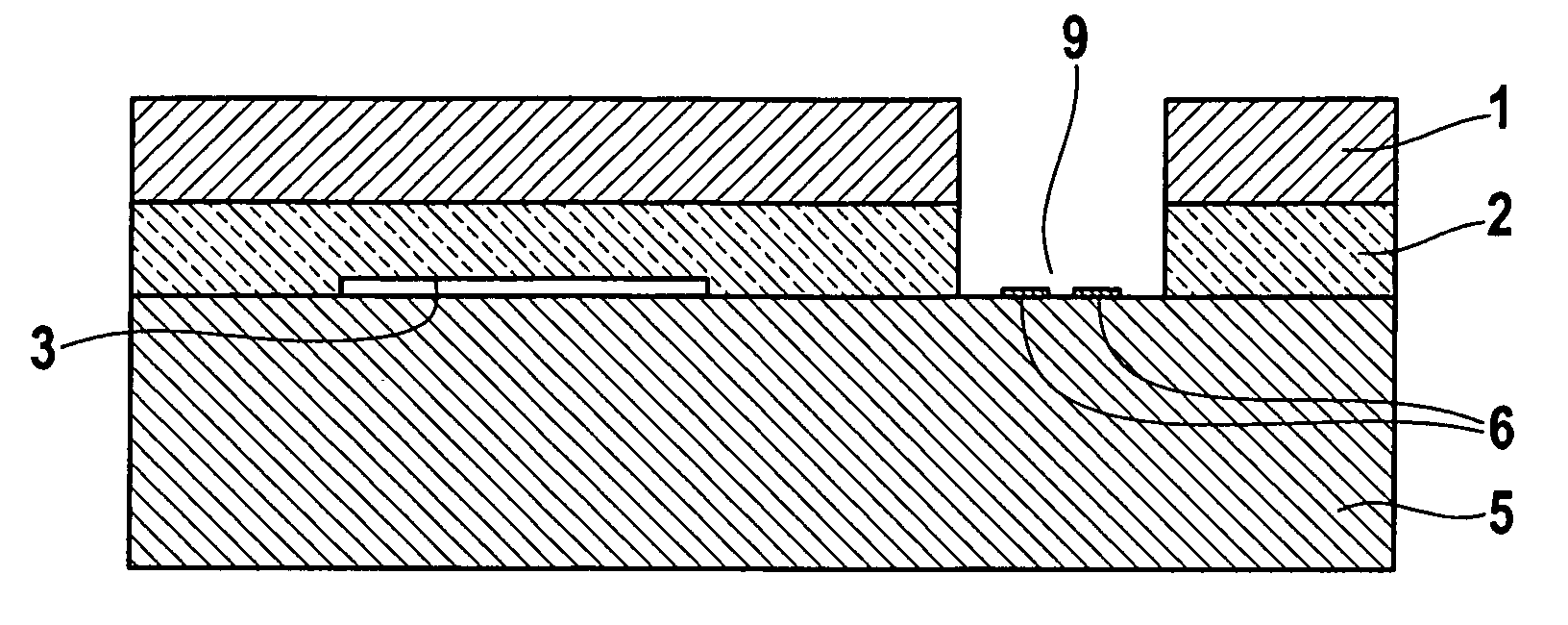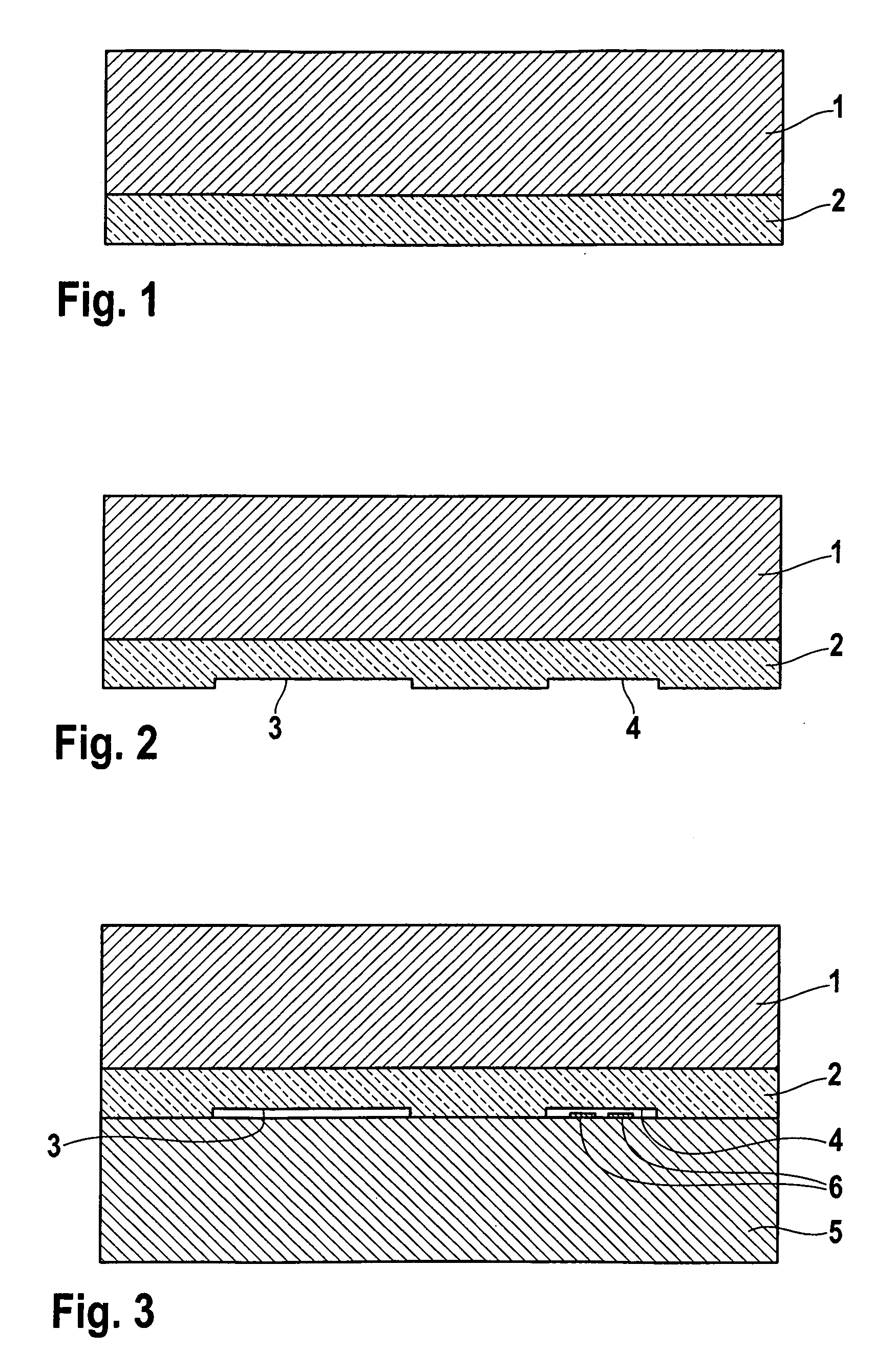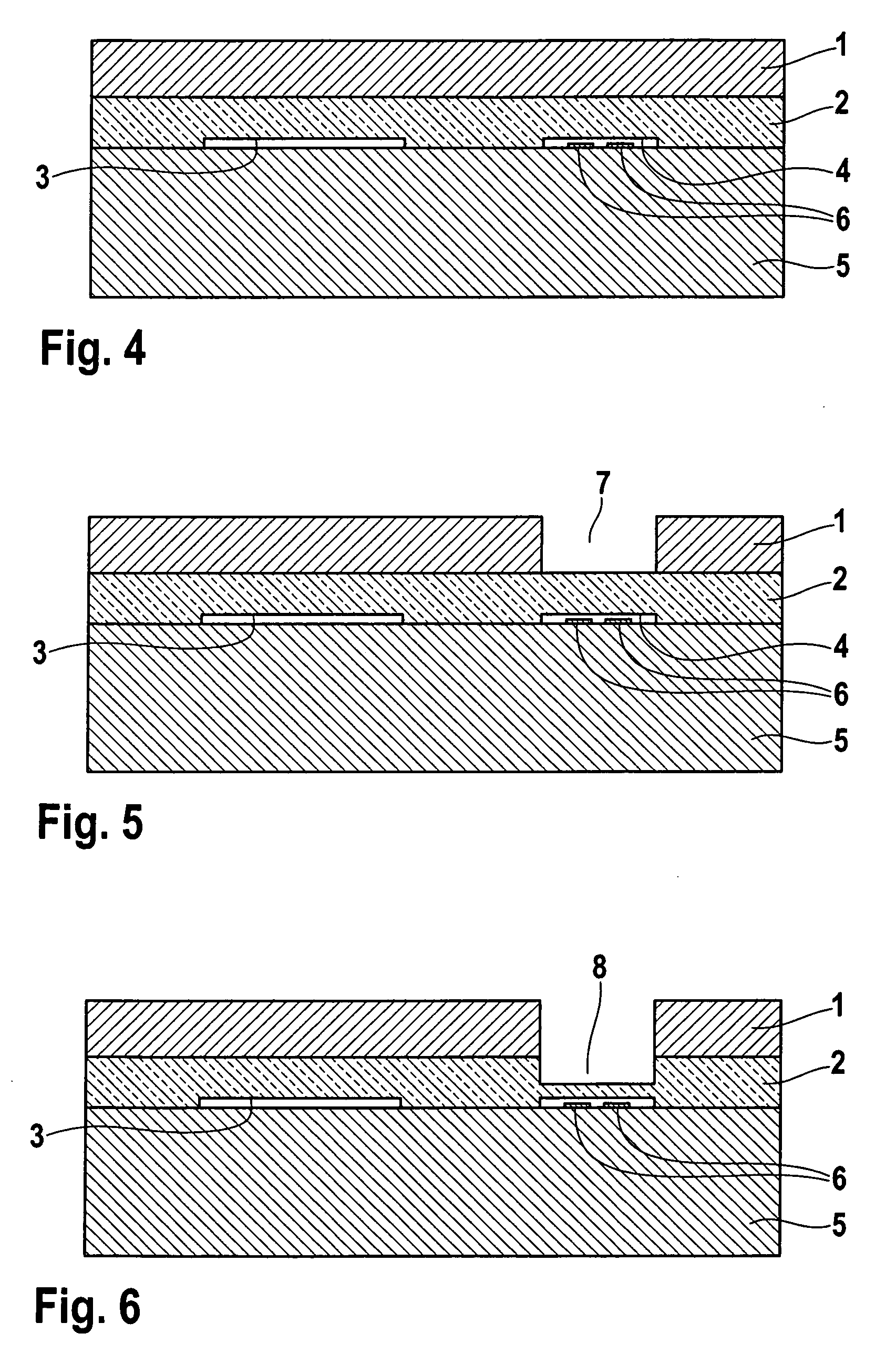Micromechanical component having an anodically bonded cap and a manufacturing method
a micromechanical and cap technology, applied in the direction of electrical equipment, semiconductor devices, semiconductor/solid-state device details, etc., can solve the problems of high cost, high manufacturing cost, and the production of electrical accesses from the back side of the sensor substrate with some degree of technological complexity, so as to reduce the surface area of the sensor chip, reduce the cost, and keep the technological expenditure small
- Summary
- Abstract
- Description
- Claims
- Application Information
AI Technical Summary
Benefits of technology
Problems solved by technology
Method used
Image
Examples
Embodiment Construction
[0029]FIG. 1 shows a cap wafer in the form of a composite cap wafer made up of a first silicon substrate 1 and a thin glass substrate 2. Thin glass substrate 2 is intended to permit the anodic bondability of the cap wafer.
[0030]FIG. 2 shows a first recess 4 and a further recess 3 which are introduced into thin glass substrate 2 of the cap wafer.
[0031]FIG. 3 shows the anodic bonding of the composite cap wafer, made up of first silicon substrate 1 and thin glass substrate 2, to a functional wafer. The functional wafer is made up of at least a second silicon substrate 5 and has at least one electrical contact surface 6 as well as, on the same side, a micromechanical structure which is not shown separately. After the bonding, first recess 4 forms a cavity over electrical contact surface 6. Further recess 3 forms a cavity over the micromechanical structure and protects this structure by encapsulation.
[0032]FIG. 4 shows the thinning of first silicon substrate 1 of the cap wafer on the bac...
PUM
 Login to View More
Login to View More Abstract
Description
Claims
Application Information
 Login to View More
Login to View More - R&D
- Intellectual Property
- Life Sciences
- Materials
- Tech Scout
- Unparalleled Data Quality
- Higher Quality Content
- 60% Fewer Hallucinations
Browse by: Latest US Patents, China's latest patents, Technical Efficacy Thesaurus, Application Domain, Technology Topic, Popular Technical Reports.
© 2025 PatSnap. All rights reserved.Legal|Privacy policy|Modern Slavery Act Transparency Statement|Sitemap|About US| Contact US: help@patsnap.com



